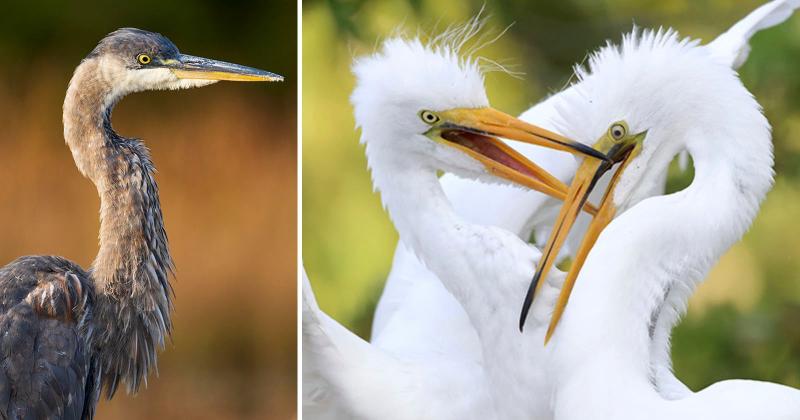The Power of Camera Height in Wildlife Photography
By: Jeremy Gray (PetaPixel)


Good photographic advice for any subject.

Expert wildlife photographer Steve Perry of Backcountry Gallery showcases the power of camera height in a new educational video. One of the most powerful and effective ways to change a wildlife photo's story is by shooting from different heights relative to the subject.
"Using the advice in this video can transform your photography overnight," Perry says, adding that understanding the proper camera height for a given subject and situation will elevate snapshots to artwork.
Perry outlines the three main ways that perceived camera height changes the story an image tells. The first is a perspective from above the subject's eye level.
"When a viewer looks at a photo taken from above eye level, they feel as though they are dominating the animal and are less connected to the subject visually," Perry explains, citing that the phrase "looking down on someone" has a negative connotation.
"99% of the time, a wildlife photo improves when you use one of the other two options," Perry says. This is very important when considering smaller animals, which photographers would typically be looking down at if they were standing and holding their camera to their eye.
Consider PetaPixel's coverage of the 2022 Wildlife Photographer of the Year awards and the wildlife winners from 2021's Nature Photographer of the Year competition. Browsing the beautiful winning images, there are very few wildlife photos shot from anything other than at the eye level of the subject, even when considering tiny animals that a photographer must lay down on the ground to photograph. The same remains true for PetaPixel's Wild Personalities Photo Contest.
Perry admits there are exceptions to the rule, but in most cases, photographers should try to be at the same level, or perhaps even below, a wildlife subject.
"When a photo is captured at or very near eye level, the feeling between the viewer and the subject changes dramatically. It gives the viewer a feeling of connection and engagement with the animal that stems from the equality that naturally arises when you are at the same height," Perry explains.
He puts it very well when he adds that a photo captured from the same level as the subject can make the viewer feel like they are stepping into the animal's world rather than viewing it from a disconnected or distant perspective. This feeling of connectedness is very important and is also related to the importance of seeing a subject's eyes in an image.
"When you shoot at eye level, you are literally creating a bond that thrusts your viewer into the animal's head," Perry adds.
Another powerful compositional tool is shooting from below. Perry warns that it requires the right subject to be effective.
"When the viewer position is lower than the subject's eye level, the subject feels like it is dominating the viewer or even the territory," Perry explains. An animal photographed from below can seem powerful, imposing, and perhaps even terrifying.
Photographing animals from their level or perhaps even below them has another massive benefit for wildlife imagery, the perspective can significantly increase the distance between the subject and the background, resulting in beautiful, soft backgrounds.
Perry has talked about the importance of camera height before. In a video earlier this year about six common mistakes that nearly all wildlife photographers make, shooting at the wrong camera height made the list.
Another frequent and related mistake is when photographers do not consider the background when taking wildlife photos. An ideal camera height can fix this issue.
Consider a situation where a camera is pointed down at a small animal on the ground. The ground behind the animal is very close, making the background appear somewhat sharp and distracting even with a fast lens. All else equal, by lowering to the subject's level, the background will almost always be much further away and can be rendered much more pleasing.
It can be challenging to shoot when a camera is low to the ground, so Perry recommends using a camera's rear display in some instances. Many modern cameras sport tilting screens, and some are even fully articulating, which makes it much easier to compose images using the rear display. With mirrorless cameras, the live view experience is identical between the viewfinder and the display.
In many locations, when armed with a long lens, Perry uses the terrain to lower his perspective. Sometimes his subject is downhill from him, but that does not mean an eye-level shot is impossible. In these cases, getting low and keeping the camera square to the hill's grade can make it look like an image was shot on flat ground.



Moving the camera is an easy technique that doesn't require gadgets, exceptional talent, or difficult to acquire skill. Often these types of simple techniques are the difference between taking a photograph and making a photograph.